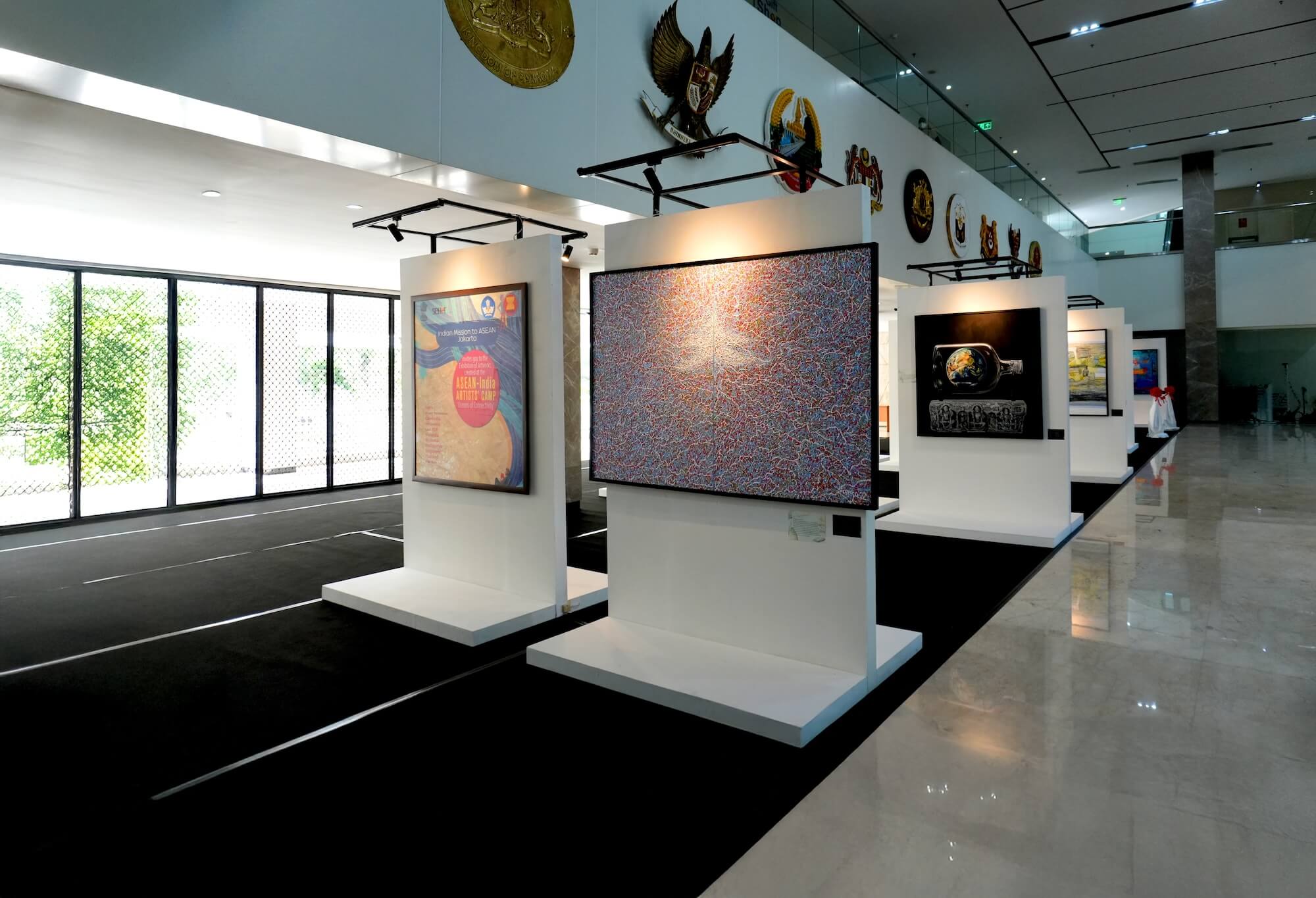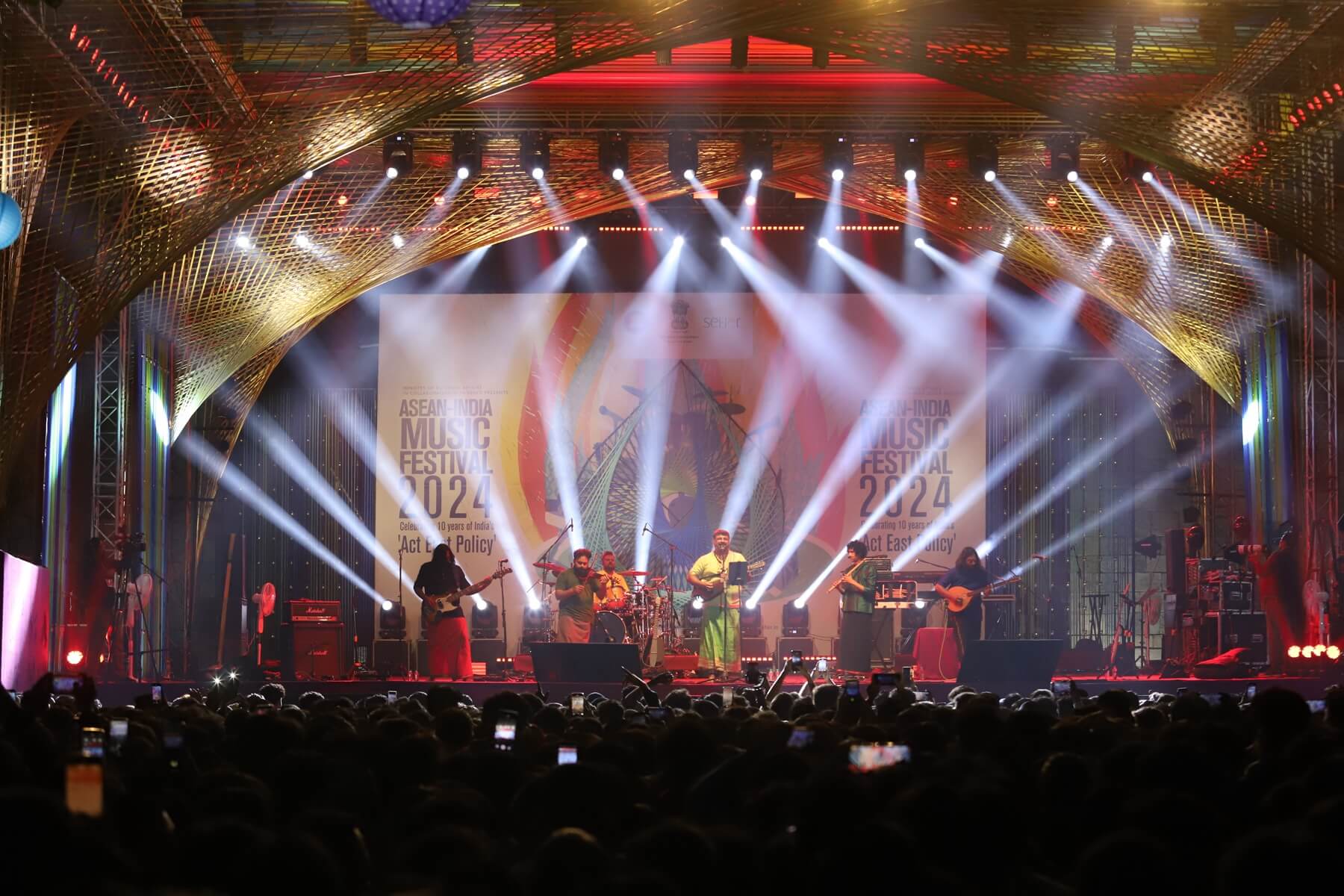



Agus is a design student in one of the oldest design schools in Indonesia, located in Bandung City, West Java province. Like other design students and professional designers in this city, Agus came looking for a small metal workshop to complete an assignment: a set of home decor products. He hired a metal craftsman to build a prototype. The prototype, built through a simple process, was finished in less than a week.
Udin, a graphic designer, urgently needed to print his work. He contacted a printing shop owner, Andi, to provide this service and then sent the file through WhatsApp. Since Udin was a long-time customer, Andi knew what needed to be done and completed the task in two short hours. Once the printout was produced, Andi sent it to Udin right away through GoSend goods delivery service. The transaction was quick, efficient, and all done online.
Agus and Udin’s stories are commonplace in Bandung, a city well-known as a thriving hub for designers, musicians, videographers, and various professions in the creative economy sector.
In an initiative called JalanJajan.bdg by the Bandung Creative City Forum (BCCF), which started in 2016, creative communities collaborate with several food business owners, from small warongs (food kiosks) to groups of street vendors. They create urban game activities and invite the participants to experience the city by exploring multiple food kiosks and street vendors. In JalanJajan.bdg, participants must walk, guided by a printed map, to complete 20 challenges.
These include trying out different kinds of food in the city’s must-visit places indicated on the map. To create the game and run this event, the organisers conduct research on the history of the kiosk establishments, the cultures that influenced the food varieties. They also connect and collaborate with the owners to structure the game. For the business owners, participating in this activity is also beneficial and profitable because the participants become returning customers.
Udin, Agus, and the BCCF share a similar story: they are constantly in close contact with the various actors working in the informal economy sector, such as a printing shop owners, blacksmiths, and also several warong owners, stalls, and street vendors. These relationships were built not only based on their economic value, but also on the values of friendship, family, brotherhood, and mutual help, which underpin the relationship of actors in the “informal economy” and “creative economy” sectors.
The Relationship Between Informal and Creative Economies
How do the informal and creative economies intersect? There are recent studies showing similar characteristics in both sectors that make the relationship between the two practicable.
The informal sector is defined as a group of not officially registered businesses that typically generate low income and do not pay taxes (La Porta and Shleifer, 2008). However, an informal business generally has a strong family network, and a strong sense of helping communities to form a social infrastructure that can support their daily income (Simone, 2004; Malasan, 2019).
For instance, the digital start-up ecosystem in Thailand flourished rapidly because start-up entrepreneurs receive significant support and assistance from their families and friends for their creative processes (Leung and Cessu, 2020). The “Nollywood” film industry in Nigeria has grown successfully due to the strong social network among the actors and their families, which provides a solid procurement system for the film production process, as well as the distribution channel of their works. The industry’s success has a significant impact on economic growth and employment in the region (Lobato, 2010). The development of the design ecosystem in Istanbul, Turkey, has also been influenced by the presence of actors in the informal sector, who have a vital role in supporting the work of designers, such as goldsmiths, stone setters, neon sign makers, inlayers, coppersmiths, and welders who are spread out in urban and sub-urban areas (Kaya and Yagiz, 2011).
Certainly, the relationship between players in the two sectors cannot be separated from the fact that more than 60 per cent of global economic activity takes place in the context of the informal sector. In the Asia-Pacific region, almost 68 per cent of workers are generally categorised in the informal sector. On the other hand, the contribution of the creative economy in several countries in Southeast Asia continues to grow rapidly, for instance, creative products for export needs have increased by 30 per cent in Indonesia between 2012 and 2015 (Sirivunnabood and Alegre, 2021). In the Philippines, the contribution of the creative economy sector to its national GDP reached up to 6.5-7 per cent in 2021. Certainly, the growth of the creative economy in several countries in Southeast Asia, particularly in Indonesia, can be supported by the active collaboration between makers, creators, or any creative players in the informal and creative economy sectors.
If we explore further, the two sectors have similar characteristics. For instance, working situations in the creative sector are essentially supported by casual, playful, and flexible conditions as well as strong family ties between actors (Alacovska and Gill, 2019). In a study conducted on artist communities in Yogyakarta, Central Java, “hanging-out” is an activity that is perceived to be non-productive. It is in fact, essential for these individuals to socialise with various communities that have a direct impact on their productivity (Dahl, 2016). Similar to the local conditions in Yogyakarta, the “hangout culture” also provides ample opportunities for the music communities in Bandung to exchange knowledge. It has allowed for the emergence of various genres in the local music scene, such as death metal, hip hop, indie rock, indie pop, to electronic music (Resmadi, 2016).
At the same time, the actors in the informal economy sector, like owners of sewing shops, screen printing businesses, and woodworks shops, as well as food stalls owners and street food vendors, have similar characteristics.
From the previous studies conducted on the characteristics of the players’ in both the informal and creative sector, we can see similarities in their daily existence, where they get support from their strong social and familial networks, and create casual, flexibile, and even playful conditions. These common factors can perhaps be catalysts for individuals and communities from the two sectors to communicate, collaborate and synergise their creative and business endevours.
The stories of designers Agus and Udin, and the JalanJajan.bdg programme illustrate how similar social and cultural conditions can forge collaborative and economically viable activities between the two sectors.
The Future of Informal and Creative Economy
From the story of Agus who produced home decor products in a small metal workshop, the experience of Udin using the printing service of Andi, to the success story of JalanJajan.bdg urban game programme based on the trust between the event organisers and food vendors, we have three points of reflection to conclude this article.
First, the flexibility and casual working condition of the two sectors count among the dominant factors that form the nature of work in both sectors, which may ease the communication process between them. Second, a great sense of responsibility towards the community beyond the individual aspect, friendship, and family ties are common values that can be found between the two actors. Finally, each actor from these two sectors consciously builds a solid social relationship based on trust, especially in the creative process that is carried out together. Looking at the intense interaction between the actors from two sectors in their everyday life, further research on the intersection of these two sectors would be crucial, economically, socially, and culturally, to explore potential collaboration between these two sectors.








